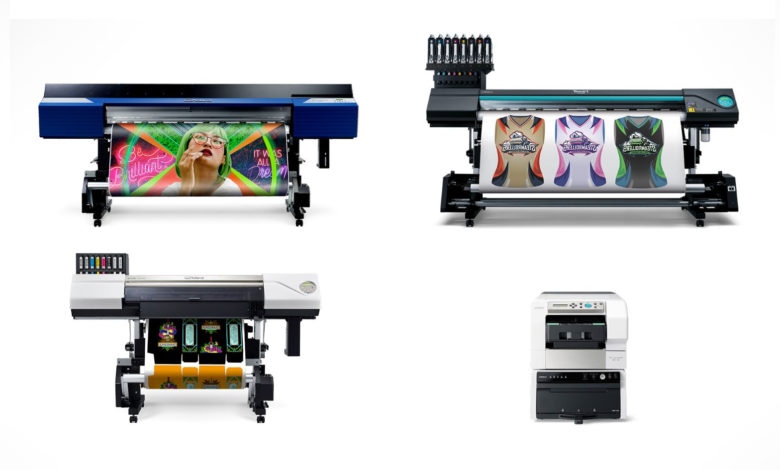
My kids love visiting Roland DGA headquarters to see all the different types of printers and the cool things our inkjets can produce. They typically ask me to print on a variety of things, ranging from banners and stickers to clothing and backpacks. While they know that there are different printers for different types of print jobs, they’re still too young to understand the differences between an eco-solvent, UV, or dye-sublimation model. In their minds, all I need to do is put an object into whichever printer I choose, and it will magically come out with their customized design printed on it. When I try to educate them, I get blank stares followed by a request to custom print another item.
I’ve spoken to a variety of people at trade shows, and even friends, who are interested in learning more about digital printing. Whenever I do so, I break it down to the types of inks and what they’re used for. This helps match the application to the best print technology. Here’s a quick breakdown of ink characteristics.
Eco-solvent inks
Mild solvent is the carrier liquid for the pigments. During the printing process, the solvent “bites” into the media and deposits the ink pigments. The heat from the printer platen evaporates the solvent, leaving the output vibrant and dry. These are extremely versatile inks that can be printed onto a variety of media, like decals, posters, signage, canvas, and heat transfer paper, allowing for many different types of applications.
UV inks
Again, mild solvent is the carrier liquid for the pigments. The UV inks lie on the surface of the media or blank before a UV lamp goes over the printed area to cure or dry the inks. You’re able to build up the ink layer and create a variety of textures on either rolled material or flat material. The output is dry and can have a glossy, satin, or matte finish, depending upon the UV lamp and curing process. This printing technology is good for signage, promotional products, and even fine art.
Dye-sublimation inks
Water is the carrier liquid for dyes in this process. You print onto a transfer paper, the output mirrored and looking dull and unimpressive at this stage. Sublimation takes place at the heat press, where the inks are transferred from the paper onto a polyester fabric or polyester-coated rigid substrate. At 400 F (204 C), the solid inks from the paper turn into gas and penetrate the polyester. This is when the colors bloom and become vibrant. Dye-sublimation is ideal for textiles such as apparel or soft signage, but it’s also used for promotional items, decor, and metal photo panels.
Pigment inks
This type of ink, where water is the carrier liquid for the pigments, is used in Roland DGA’s VersaSTUDIO BT-12 direct-to-garment (DTG) printer. Just like with UV, the inks lie on top of the surface of the fabric, typically cotton-based products. The colors are vibrant, but the inks still need to be cured, which is done on the heat press. Unlike dye-sublimation, the inks do not penetrate the fibers but are cured on the surface.



